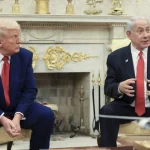
China is rapidly expanding its nuclear arsenal, with projections suggesting it could possess as many as 1,000 nuclear weapons by 2030, according to the latest Pentagon assessment of Beijing’s military capabilities.
The report highlights that China has added at least 100 nuclear warheads to its stockpile in the past year, bringing its total to over 600. This estimate comes at a pivotal moment as the incoming Trump administration contemplates its approach to China, expected to continue the hardline stance established by President Joe Biden.
President-elect Donald Trump is anticipated to employ tariffs and economic measures as tools to influence Beijing, while he seeks to appoint staunch advocates for a tough stance on China, including State Department nominee Marco Rubio and incoming national security advisor Rep. Mike Waltz (R-Fla.).
This nuclear projection is part of an annual report submitted by the Pentagon to Congress, which details the evolution of China’s military ambitions, including the growth of its naval and aerial forces, as well as internal corruption within the defense ministry.
Although the report ceases to forecast the size of China’s nuclear arsenal beyond 2030, a defense official, who spoke on the condition of anonymity, indicated, “I would certainly expect them to continue expanding and modernizing their force after that.”
China adheres to a “no first use” policy regarding its nuclear capabilities—indicating a commitment not to initiate a nuclear strike—focusing instead on deterrence against a substantial retaliatory attack, the report states.
The surge in nuclear warheads coincides with a broader initiative to develop new intercontinental ballistic missiles (ICBMs) that are not only more numerous but also designed for enhanced survivability, thereby boosting their nuclear capabilities. “They also are showing some interest in developing a new conventional ICBM that could strike Hawaii, Alaska, and the continental United States,” the official noted.
This military expansion is paralleled by an anticipated increase in China’s defense spending.
China’s defense expenditure has long been opaque, with U.S. and Western officials warning that Beijing, similar to Russia, does not transparently disclose the full extent of its defense budget. The report estimates that China’s actual defense spending could exceed its publicized budget by at least 40 percent, translating to approximately $330 to $450 billion in total defense outlays for 2024.
In contrast, the U.S. defense budget remains the largest globally, with President Joe Biden’s latest request reaching $880 billion and expected to grow following congressional adjustments.
Despite some resumption of mid-level military dialogues between the U.S. and China over the past year, tensions persist. Notably, China’s defense minister declined a meeting with Defense Secretary Lloyd Austin during a recent defense leaders’ summit in Laos, a move Austin deemed “unfortunate” and a “setback for the whole region.”
American and Chinese military officials did convene in Beijing in September, and Navy Adm. Samuel Paparo, head of the U.S. Indo-Pacific Command, held a video conference with Gen. Wu Yanan, the commander of China’s southern theater.
These discussions emerged after an agreement in January to revive the U.S.-China Defense Policy Coordination Talks, marking the first high-level talks since September 2021.
In terms of sheer numbers, China continues to outpace the Pentagon. The Chinese navy is now the largest in the world, boasting over 370 ships and submarines, including more than 140 major surface combatants, outstripping the U.S. Navy’s fleet of 290 vessels. Several advanced destroyers, cruisers, and amphibious ships are also under construction in Chinese shipyards.
Beijing’s third aircraft carrier, the Fujian, is projected to enter service in 2025.
China’s air force is ramping up production of its fifth-generation J-20 stealth fighter and is in the process of establishing a new assembly plant to facilitate further expansion. Approximately 1,300 of its 1,900 fighters are advanced fourth-generation models that compete with some of the most sophisticated aircraft produced in the U.S. and Europe.
While China has made significant advancements in modernizing its military, challenges remain, particularly with corruption.
The People’s Liberation Army “continues to struggle with deeply rooted problems of corruption,” a defense official remarked, noting that last year, fifteen high-ranking military officials and defense industry executives were dismissed due to corruption, several of whom oversaw modernization projects related to China’s ground-based nuclear and conventional missiles.
Furthermore, China faces obstacles in developing an effective logistics strategy for deploying its ships, aircraft, and troops far from the mainland, which may constrain its ability to project power beyond the South China Sea.















